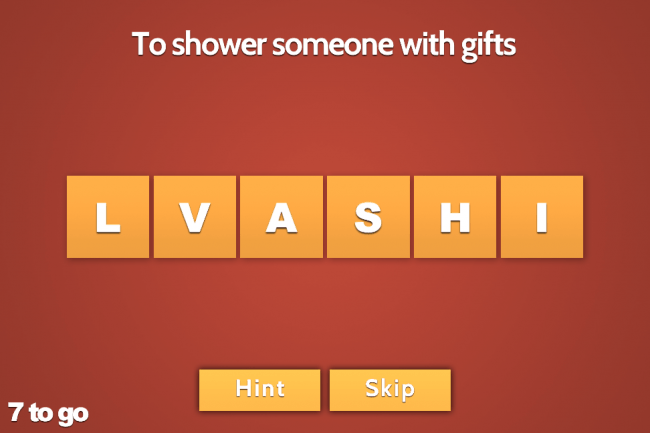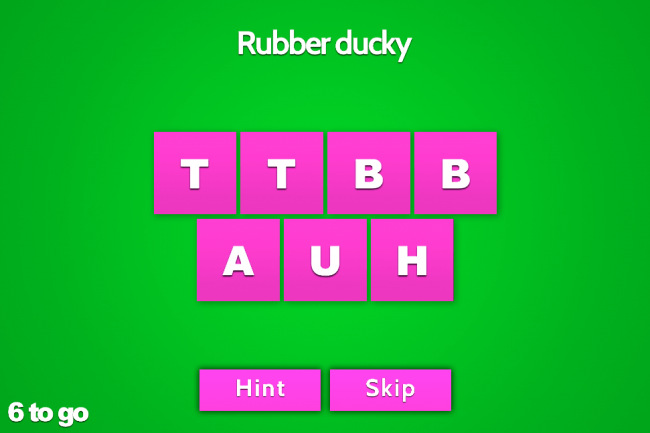- Wondering how to get Monopoly GO! free rolls? Well, you’ve come to the right place. In this guide, we provide you with a bunch of tips and tricks to get some free rolls for the hit new mobile game. We’ll …
Best Roblox Horror Games to Play Right Now – Updated Weekly
By Adele Wilson
Our Best Roblox Horror Games guide features the scariest and most creative experiences to play right now on the platform!The BEST Roblox Games of The Week – Games You Need To Play!
By Sho Roberts
Our feature shares our pick for the Best Roblox Games of the week! With our feature, we guarantee you'll find something new to play!All Grades in Type Soul – Each Race Explained
By Adele Wilson
Our All Grades in Type Soul guide lists every grade in the game for all races, including how to increase your grade quickly!
Project Shuffle Developer Diary #1: Finding The Fun
When we started on Project Shuffle, we breathed a sigh of relief. Our previous games had been, comparatively, quite complex, even if they were an endless runner and a puzzle game.

When we started on Project Shuffle, we breathed a sigh of relief. Our previous games had been, comparatively, quite complex, even if they were an endless runner and a puzzle game.
“How hard can it be to move some letters around on a screen to make a word?” We asked.
“Give people 90 seconds to solve as many words as possible and that’s the game in the can!” We said.
“The publisher is giving us more time and money than we’d ever need to get this done!” We said in low voices as we laughed manically while stroking cats in our fancy white leather 70’s style chairs.
As it turns out, rearranging letters on a screen is really quite easy. It took a lazy afternoon to stick it together in a nice way, and even putting a nice 90 second timer in the mix was a trivial process. We had an almost error free prototype by the end of the first week and everything felt really good. Then we started showing the game to everyone else.

There is no more exhilarating an experience than putting your work in front of someone else, particularly someone else who doesn’t care whether you sink or swim, to get their thoughts and feelings on your work. We ran the gamut of opinions, from those held by industry peeps whose opinions we value and trust because they’ve done it all before, to users who ranged in age from 6 to 60 whose opinions we value and trust because they’re the customer and they’re ones we’re doing this for. Almost universally, the first response after playing was “It would be more fun if…”. It doesn’t really matter what words came next (it does, but for the sake of brevity here, it doesn’t) we knew that there was something missing.
We went back to the drawing board and broke the game down into the two unique aspects that we could control that would make it fun.
The first was the format of the clues. The core mechanic of the game is really quite simple: you are shown a clue and a scrambled word, and all you have to do is unscramble the word to move on. The thing is, HOW we phrased the clue really impacted on how people played the game. Present a direct question like “What fruit comes from a small deciduous Asian tree?” and people tend to shut down immediately and move on to the next question. Give them a hint instead, like “Keeps the doctor away.” and it gives you, the player, permission to explore the word and have more fun. It also makes everyone feel much smarter, and we like making people feel smart.

The second aspect we could control that would give the player a more enjoyable experience was the game surrounding the core. A big slice of our audience didn’t respond well to timers at all. It rushed them through the game without the opportunity to play with and explore the words to find an answer. It wasn’t fun; it was stressful. The big problem with this realization was that the timer was at the core of our competitive model. Without it, how could people bring a rhetorical smack down on their friends and loved ones? We needed something fun, yet competitive so that we could put the social back into our as yet undefined tagline “Something something, something social word game!”
What we tried, and the success we had, is the topic of a future dairy!
Screwtape Studios are Megan Summers, producer and designer and Anthony Wood, lead designer and programmer.
More articles...
Monopoly GO! Free Rolls – Links For Free Dice
By Glen Fox
Wondering how to get Monopoly GO! free rolls? Well, you’ve come to the right place. In this guide, we provide you with a bunch of tips and tricks to get some free rolls for the hit new mobile game. We’ll …Best Roblox Horror Games to Play Right Now – Updated Weekly
By Adele Wilson
Our Best Roblox Horror Games guide features the scariest and most creative experiences to play right now on the platform!The BEST Roblox Games of The Week – Games You Need To Play!
By Sho Roberts
Our feature shares our pick for the Best Roblox Games of the week! With our feature, we guarantee you'll find something new to play!All Grades in Type Soul – Each Race Explained
By Adele Wilson
Our All Grades in Type Soul guide lists every grade in the game for all races, including how to increase your grade quickly!







